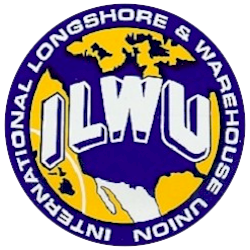
San Francisco Waterfront History

San Francisco Waterfront History
The San Francisco Waterfront
The Social
Consequences of Industrial Modernization
Part One; "The Good Old Days"
By Herb Mills
Page 28
Having finished with the deck cargoes, the men would send the water can ashore, together with such tools as they had been using. The dock men having removed the stevedore gear from the cargo hook, the save-all would be let go and sent ashore.
The men would then "wing in the gear," i.e., let go the preventers and guys and haul in the boom until they were both standing above the hatch. With that, they headed for the gangway.
Frequently, as many as ten gangs (of some sixteen to twenty men each), plus the necessary dock workers, would work a general cargo vessel. With a proper allocation of the shipboard men, all of the hatches would as a rule be finished about the same time.
As the last of the gangs finished up, tugs would be positioned against the vessel. The pilot who would take the vessel through the Golden Gate and into the open sea would appear on the bridge. By then, linesmen, too, would have stationed themselves abreast the bits to which the mooring lines had been made fast.
As the last gangs came down the gangway, the dock men would be closing the doors of the cargo shed. With the men ashore, the crew hauled in the gangway, the mooring lines were slackened and let go.
As the vessel cleared the dock, the men were pouring onto the Embarcadero. By the time they had reached their automobiles or the trolley stop, the vessel had moved into the stream and was headed for sea.